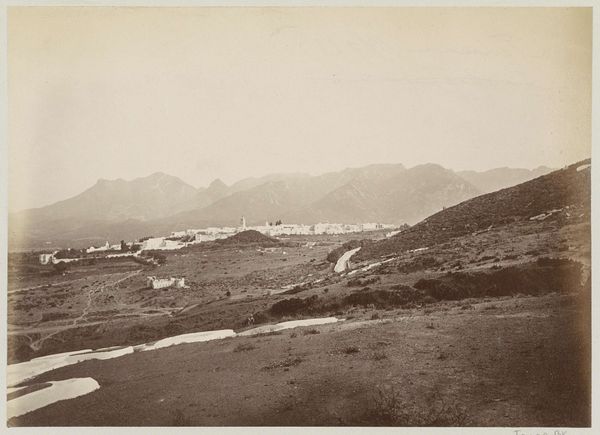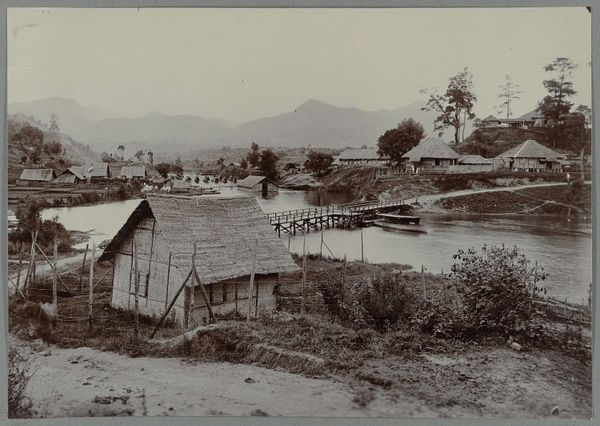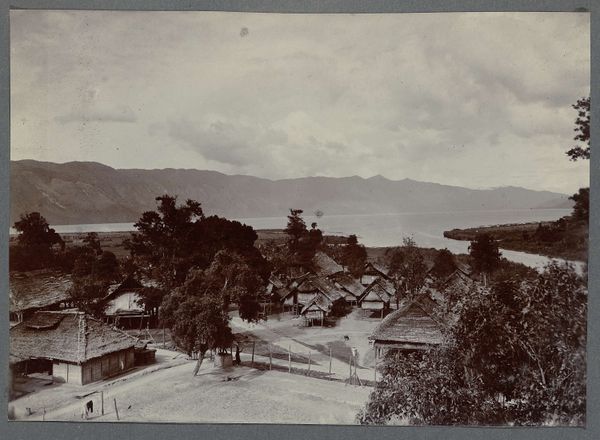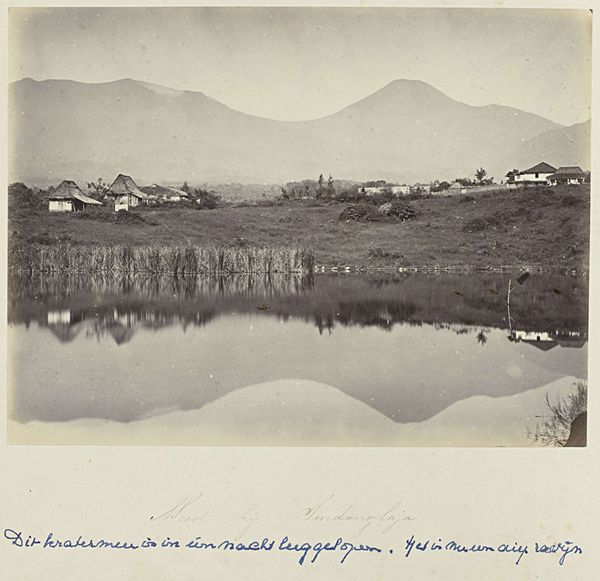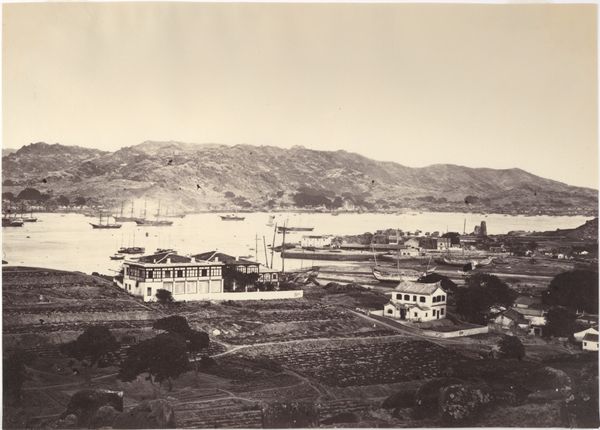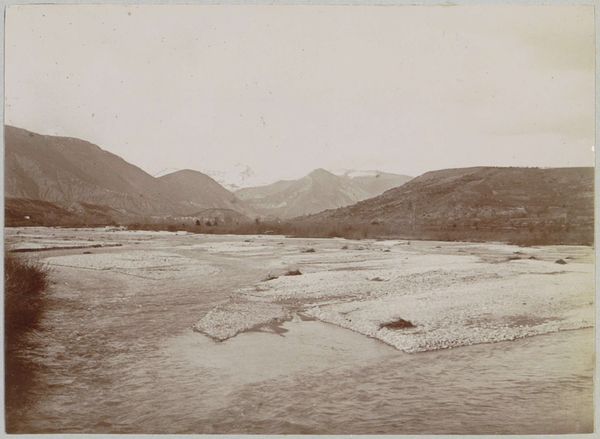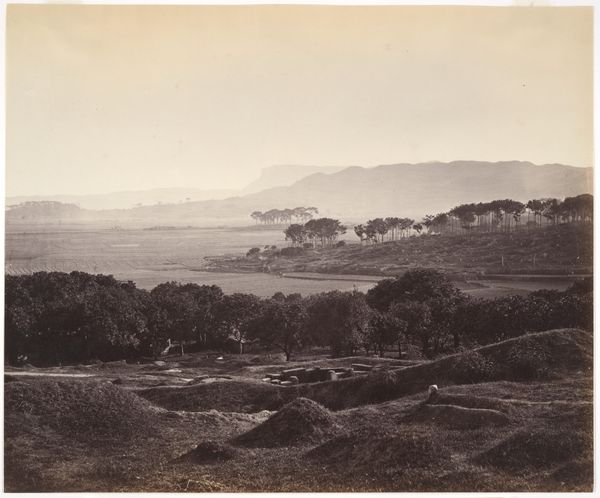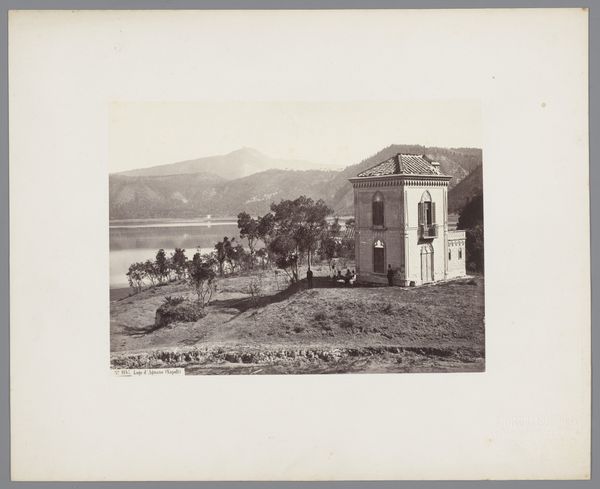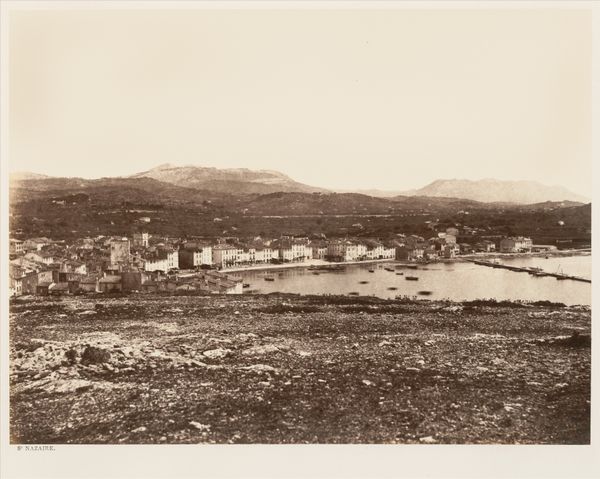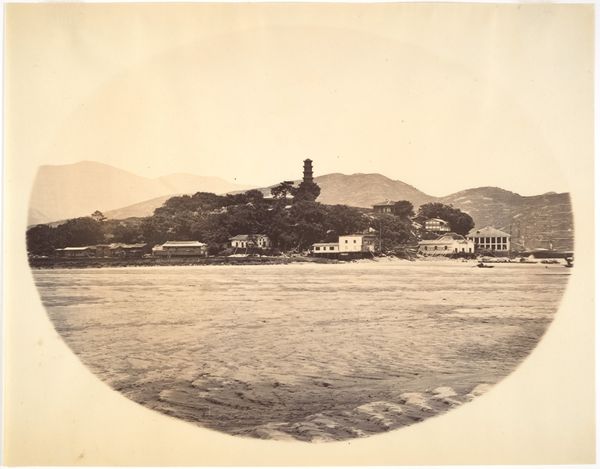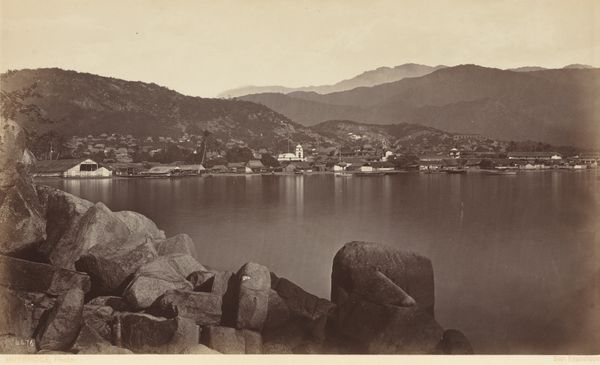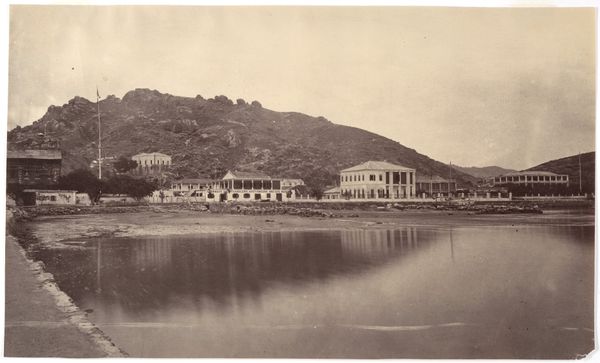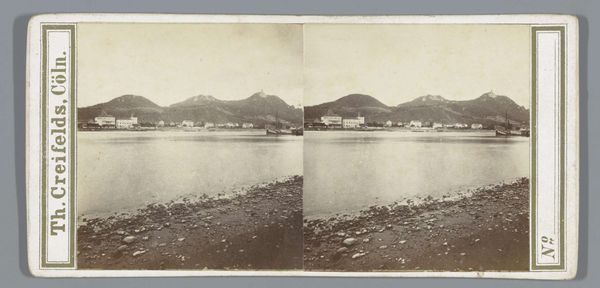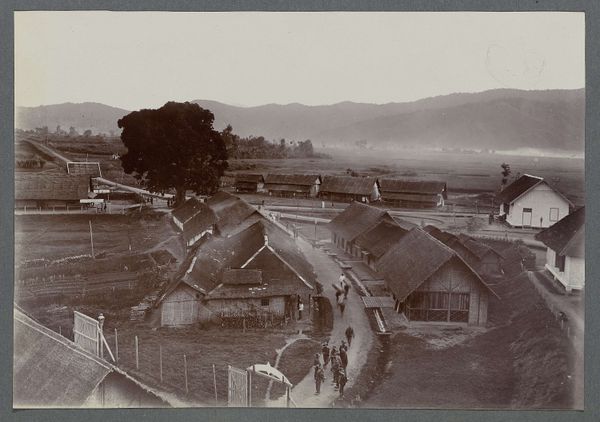![[Village, River Min] by John Thomson](/_next/image?url=https%3A%2F%2Fd2w8kbdekdi1gv.cloudfront.net%2FeyJidWNrZXQiOiAiYXJ0ZXJhLWltYWdlcy1idWNrZXQiLCAia2V5IjogImFydHdvcmtzLzgzMTMxZDA4LWUxM2MtNDMyOS1hMGFiLWE0NGZlMDBjNTkzNC84MzEzMWQwOC1lMTNjLTQzMjktYTBhYi1hNDRmZTAwYzU5MzRfZnVsbC5qcGciLCAiZWRpdHMiOiB7InJlc2l6ZSI6IHsid2lkdGgiOiAxOTIwLCAiaGVpZ2h0IjogMTkyMCwgImZpdCI6ICJpbnNpZGUifX19&w=3840&q=75)
photography
#
outdoor environmental image
#
asian-art
#
landscape
#
river
#
outdoor photograph
#
house
#
outdoor photo
#
outdoor photography
#
photography
#
mountain
Dimensions: Image: 9 in. × 10 15/16 in. (22.8 × 27.8 cm)
Copyright: Public Domain
Curator: Immediately, I’m struck by the raw materiality of this image, the palpable sense of texture created by the wet collodion process used in John Thomson's photograph, "Village, River Min" from 1869, currently held at the Metropolitan Museum. Editor: It feels quite serene, a very deliberate staging of humanity within a vast landscape. The village nestles so neatly in front of the mountains. The curving river guides our eye, almost like a stage curtain revealing the scene. Curator: Precisely. Consider the logistics: Thomson would have needed a portable darkroom to prepare and develop his plates on location. The silver, the glass, the chemistry—all crucial elements in translating the light and atmosphere into this durable object. His labor is imprinted on this image, it gives it texture. Editor: And consider the cultural implications! Thomson, a Western photographer documenting 19th-century China. His presence and choices shaped how this village was presented to the West. There's a power dynamic inherent in the very act of him photographing. How did the local villagers engage, and receive, being captured by him? Curator: I wonder what materials the buildings are made of. Sourced locally? From afar? Understanding the building materials of the village is crucial to understanding the life lived by these people, who constructed them and from what. It speaks volumes about the means of survival. Editor: Yes, there’s an undeniable romanticism in his vision of it, but to dismiss the image based on that lens alone risks overlooking its value. The photograph was also distributed through various publications at the time, offering a glimpse into a world largely unknown to European and American audiences. Consider the audience it cultivated and its impact in those settings. Curator: And that distribution is crucial, as well. It takes that photographic process—those material conditions—and distributes them within larger capitalist frameworks. Each reproduction creates new labor and reinforces those economies. Editor: Absolutely, examining those power dynamics while acknowledging the photograph's role in shaping Western perceptions allows for a fuller understanding of the art, it becomes more useful as an artistic social artifact. Curator: It prompts further investigation into the economics and physical labor that brought this image, the art object, into existence. The photograph's lasting value to scholars and how it circulated helps me to recontextualize the art. Editor: And for me, seeing how that art influenced our own historical awareness and created its own narratives that linger in the collective imagination makes it relevant to conversations about social dynamics and political framing of art today.
Comments
No comments
Be the first to comment and join the conversation on the ultimate creative platform.
